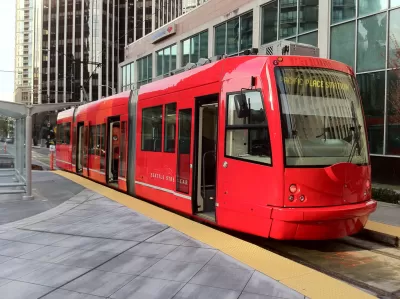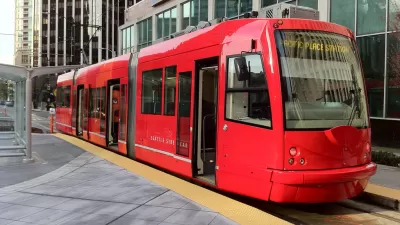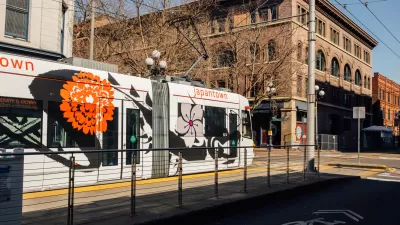Can an expansion of Seattle's streetcar system somehow outperform its previous iterations, and all other public transit modes in the city?

Critics are pushing back on the financial plan for 1.2-mile Center City Connector streetcar line that will run along First Avenue, according to an article in the Seattle Times.
According to David Gutman, planners are expecting a newly expanded streetcar along First Avenue to generate revenue from the fare box to cover 56 percent of the system's operating costs.
That would require a serious improvement on fare recovery on all other modes in the region. "Your fares cover about 40 percent of operating costs for Sound Transit’s Link light rail. Fares cover about 31 percent of the cost of King County Metro buses. Seattle’s two streetcar lines cover 23 percent of their costs with fares," writes Gutman.
The article includes a direct statement about the financial projections from Seattle City Councilmember Lisa Herbold, as well as other indications that staff outside the Seattle Department of Transportation doubt whether the new streetcar is going to as popular as assumed. Gutman provides a lot more detail about the plan for the streetcar expansion, which is expected to cost $177 million and break ground early in October 2017.
For the record, the Center City Connector has recovered from reports of its demise late in 2016.
FULL STORY: Seattle to spend $177M on new streetcar line amid questions about ‘unrealistic’ revenue, rider projections

Study: Maui’s Plan to Convert Vacation Rentals to Long-Term Housing Could Cause Nearly $1 Billion Economic Loss
The plan would reduce visitor accommodation by 25,% resulting in 1,900 jobs lost.

North Texas Transit Leaders Tout Benefits of TOD for Growing Region
At a summit focused on transit-oriented development, policymakers discussed how North Texas’ expanded light rail system can serve as a tool for economic growth.

Why Should We Subsidize Public Transportation?
Many public transit agencies face financial stress due to rising costs, declining fare revenue, and declining subsidies. Transit advocates must provide a strong business case for increasing public transit funding.

How to Make US Trains Faster
Changes to boarding platforms and a switch to electric trains could improve U.S. passenger rail service without the added cost of high-speed rail.

Columbia’s Revitalized ‘Loop’ Is a Hub for Local Entrepreneurs
A focus on small businesses is helping a commercial corridor in Columbia, Missouri thrive.

Invasive Insect Threatens Minnesota’s Ash Forests
The Emerald Ash Borer is a rapidly spreading invasive pest threatening Minnesota’s ash trees, and homeowners are encouraged to plant diverse replacement species, avoid moving ash firewood, and monitor for signs of infestation.
Urban Design for Planners 1: Software Tools
This six-course series explores essential urban design concepts using open source software and equips planners with the tools they need to participate fully in the urban design process.
Planning for Universal Design
Learn the tools for implementing Universal Design in planning regulations.
Ascent Environmental
Borough of Carlisle
Institute for Housing and Urban Development Studies (IHS)
City of Grandview
Harvard GSD Executive Education
Toledo-Lucas County Plan Commissions
Salt Lake City
NYU Wagner Graduate School of Public Service




























